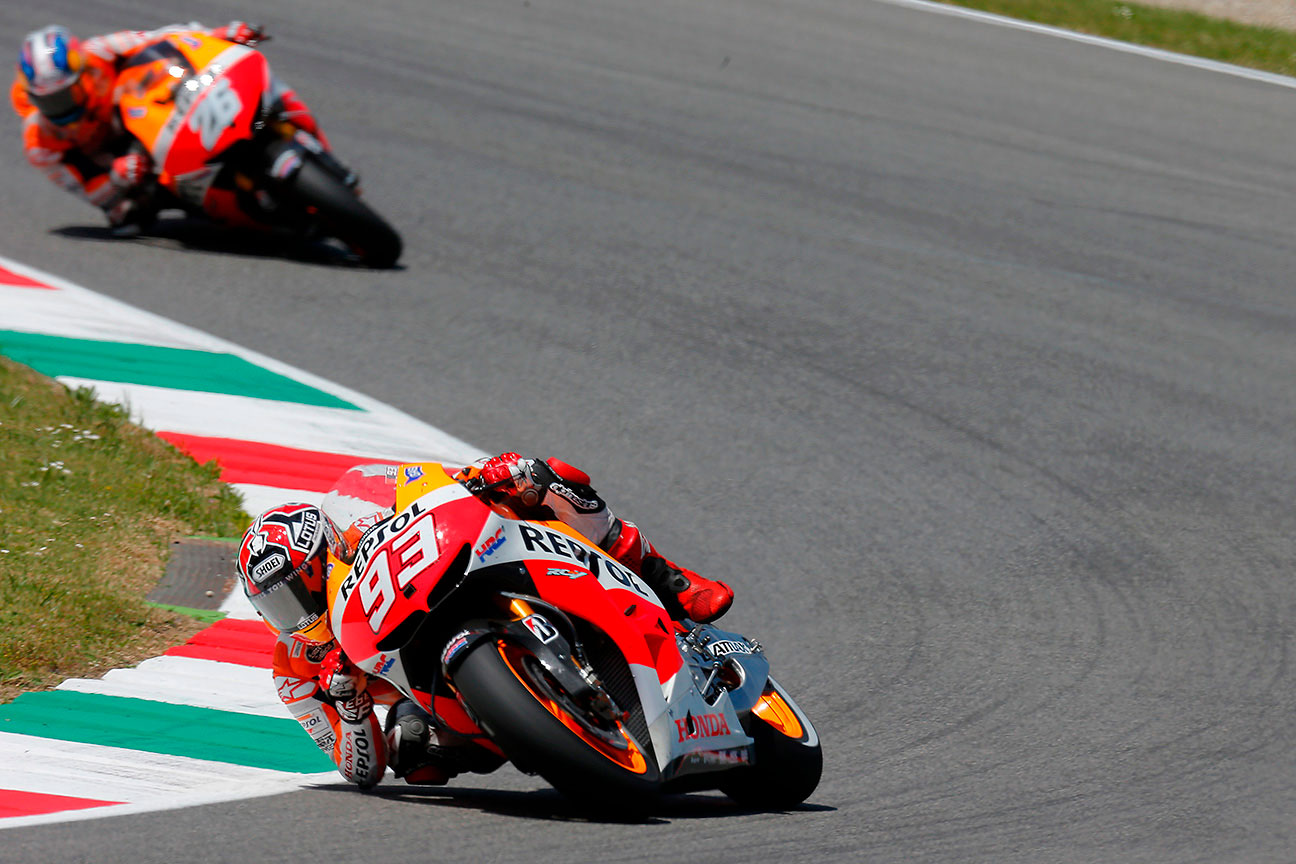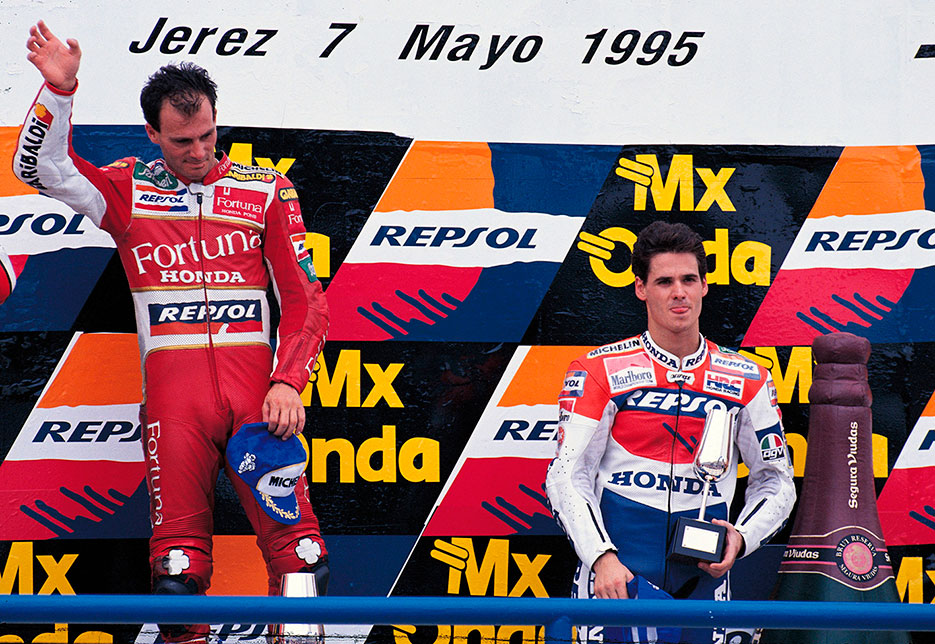MotoGP is one of the most innovative testing grounds when it comes to motorsports. The Repsol Honda team has been part of this world, which constantly changes and reinvents itself, for 25 seasons. Even though not all technological improvements have been aimed at making bikes faster (there have also been great breakthroughs in efficiency and safety), after 25 years we would certainly expect lap times in some circuits from the 500cc era to have been reduced.
Phillip Island
This circuit was re-inaugurated in the 1997 World Championship, two years after the creation of the Repsol Honda Team. Phillip Island is not only a classic but it’s also one of the most unique circuits, due to its high speed and the extreme weather it’s known for.
When the team first visited this circuit, Mick Doohan achieved a fastest lap time of 1:34.113, even though the pole went to his team-mate, Álex Crivillé, with a time of 1:33.135. The Spaniard took the victory that day, ending the 27-lap race in 42 minutes, and 53.362 seconds.

Going back to more recently, in 2013, Marc Márquez achieved the current fastest lap record with a time of 1:28.108. In his most recent victory at Phillip Island, in 2017, Marc managed to finish the race in 40 minutes, and 49.772 seconds, after taking the pole with 1:28.386.
We can see that the fastest lap today is about six seconds faster than in 1997, the pole has been reduced by 4.75 seconds and it takes about two minutes less to finish the race.
Mugello
This Italian circuit has barely changed in terms of its shape and distance since it opened in 1976 as the stage for the Grand Prix des Nations. It keeps its 5,245 original metres and all its fast segments, which give it a record maximum speed of 356.5 km/h.
During the team’s first year, Mick Doohan managed to achieve an entire Grand Slam (victory, pole, and fastest lap) on this circuit, starting in pole position which he achieved with a lap time of 1:53.524 and obtaining a fastest lap during the race of 1:54.381. The Australian managed to complete all 23 laps in 44 minutes, and 20.790 seconds.

Getting back to Marc, during his first season, he managed to set the current fastest lap record in a race, with 1:47.639, placing him 6.7 seconds below Doohan’s 500cc in 1995.
The winner of the Italian GP in 2018, Jorge Lorenzo, managed to finish the race in 41 minutes, and 43.230 seconds, with the race having the same 23-lap length it used to have in two-stroke engine era. This is two minutes and 37.560 seconds faster than Mick.
Jerez
In 1995, the winner of the Spanish GP on the Jerez Circuit was no other than our current team leader: Alberto Puig. Even though he was not among the Repsol Honda riders, he did have a Repsol sponsorship and achieved this milestone on a Honda. Doohan took the pole that weekend with a lap time of 1:44.086 but Puig was the one to take the fastest lap with a time of 1:44.995 and the victory, completing all 27 laps in 47 minutes, and 45.72 seconds.

In 2015, Jorge Lorenzo set the current fastest lap record with a time of 1:38.735, which represents an improvement of 6.26 seconds over the time obtained by Alberto in 1995. In 2017, Cal Crutchlow’s Honda managed to get the fastest pole with 1:37.653, thus improving upon Mick Doohan’s time by 6.43. That same year, Dani Pedrosa took the victory on the Andalusian circuit, finishing all 27 laps in 45 minutes, and 26.827 seconds, two minutes, and 18.901 seconds faster.
Brno
In 1996, the circuit was adapted to how we know it today. That year, Álex Crivillé obtained Repsol Honda’s first victory on that track. The race achieved epic status when the Spaniard crossed the finish line only two milliseconds faster than his teammate, Mick Doohan. Álex managed to complete the 22-lap race in 45 minutes, and 38.88 seconds. The Repsol Honda rider also completed the fastest lap in that edition, with a time of 2:02.791 but the pole went to J. M. Bayle, who completed the lap in 2:02.834.

2017 was the last year that that race had 22 laps, ending in victory for Marc Márquez, who obtained a time of 44:15.974, completing the race one minute, and 22.910 seconds faster than Crivillé. The rider from Cervera had already managed to set the fastest pole time the previous year, with a time of 1:54.596 in 2016, an improvement of 8.238 seconds! On the other hand, the fastest lap in the race went to Dani Pedrosa in 2014 with 1:56.027, 6.764 seconds faster than Crivillé’s in 1996.
With these results, the conclusion could not be clearer: today’s lap times have decreased by around six seconds. This improvement means that races last, on average, around two minutes and 9.337 seconds less. If things continue like this, in another 25 years, who knows how much more bikes will improve? There’s still room to develop new technologies or even to introduce some that are already in use in other categories.


 Join Us
Join Us  Join Us
Join Us 